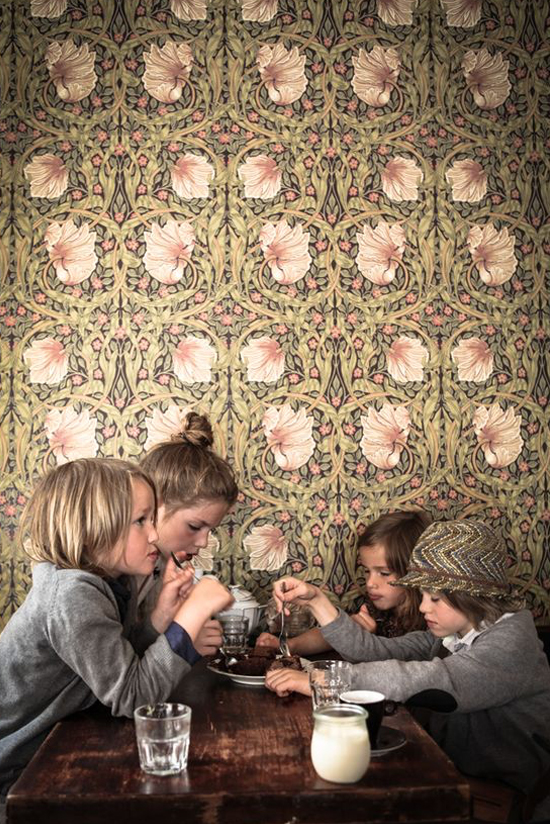William Morris
I am the first to admit that I have tended to keep pattern to areas where it can be easily updated in the past. A cushion or a duvet cover is not hard to change and can keep a room looking fresh.
Lately though, I’ve been getting increasingly interested in adding a further element of design into my schemes. As current trend moves ever further from minimal interiors, patterned soft furnishings such as rugs and curtains, plus chairs and sofas are all becoming widely available.
In addition to this, patterned wallpaper has also been catching my eye. The feature wall still doesn’t do it for me, but I am liking the idea of wallpapering smaller rooms to create real impact. So where better to start than the smallest room in the house.
The cloakroom in our latest development will be definitely be adorned with a patterned paper, and as the room is so small it needs to stand up to close inspection. When researching wallpapers certain patterns repeatedly caught my eye and they were invariably by William Morris.
William Morris was an English textile designer, poet, novelist, translator, and socialist activist.
He was one of the most outstanding and influential designers of the Arts and Crafts Movement, and through his company, Morris & Co., he produced some of the most fashionable and exciting textiles and wallpapers of his era.
He started his decorating business in 1861 and today Morris & Co. still produce authentic versions of his original designs alongside new interpretations to create up to date fabrics and wallpapers with timeless appeal.
His patterns are inspired by his intimate knowledge of natural forms, discovered through drawing and stylised through his detailed knowledge of historical styles.
They were usually titled with the names of the flowers that they depicted such as ‘Chrysanthemum’, ‘Jasmine’, ‘Acanthus’, and ‘Sunflower’. In effect, Morris took the natural forms that he found outside in the woods and meadows and used them to decorate the inside of our homes.
This led Morris to say “Have nothing in your house that you do not know to be useful, or believe to be beautiful.” A philosophy we should all bear in mind!


